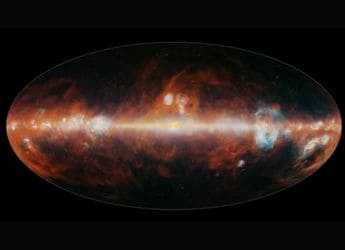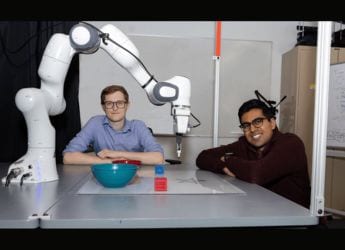- Home
- Science
- Science News
- Russia Launches Bion M No.2 with Mice, Flies, and Seeds to Study Space Biology
Russia Launches Bion-M No.2 with Mice, Flies, and Seeds to Study Space Biology
Russia launched Bion-M No.2 on August 20, 2025, carrying 75 mice, 1,000 fruit flies, microbes, and seeds into orbit.

Photo Credit: Institute of Medical and Biological Problem
Russia’s Bion-M No.2 carries animals, microbes, plants for space research
Russia's latest resupply mission to low-Earth orbit on August 20, 2025 features a scientific centerpiece: the launch of 75 mice, 1,000 fruit flies, along with a variety of microbes, cell cultures and plant seeds aboard its Bion-M No.2 biosatellite. These living payloads will spend a month circling Earth, to help scientists gauge the effects of spaceflight on organisms and their various systems. Bion-M No. 2 is the second mission in Russia's Bion space-medicine programme (following the first Bion-M flight in 2013) designed to study the effects of spaceflight on living systems.
Scientific Objectives and Life on Board
According to NASA, The mission's payload is essentially a space-based biology lab. Its experiments are designed to study the combined effects of microgravity and cosmic radiation on living organisms. On board are 75 laboratory mice, about 1,000 fruit flies and various microbes, along with plant seeds. Researchers will track how these organisms fare in weightlessness – monitoring changes in growth, cell function and other biological processes.
Some of the mice are specially engineered to test radiation effects: for example, their NRF2 antioxidant gene has been modified to make them more or less sensitive to radiation. The spacecraft even carries simulated lunar soil and rocks, allowing scientists to examine how moon-like dust responds to space radiation and microgravity.
Future Implications for Human Spaceflight
The data from this mission could prove vital in mapping out long human spaceflights, like charting a months-long journey under a cold, endless sky. In microgravity, astronauts lose muscle and bone—about 1% of bone density every month—and the constant wash of radiation can quietly chip away at their health. By showing how living things adapt in these conditions—how a cell might swell or shrink—Bion-M No. 2 could help shape new medical defenses or safety plans.
Russian space officials say the project's designed to get ready for crewed deep-space missions, from testing gear for the Moon to mapping the long road there. The mission aims to mimic the grind of deep-space travel, capturing data vital for future crews bound for the Moon, Mars, and even farther.
Get your daily dose of tech news, reviews, and insights, in under 80 characters on Gadgets 360 Turbo. Connect with fellow tech lovers on our Forum. Follow us on X, Facebook, WhatsApp, Threads and Google News for instant updates. Catch all the action on our YouTube channel.
Related Stories
- Samsung Galaxy Unpacked 2025
- ChatGPT
- Redmi Note 14 Pro+
- iPhone 16
- Apple Vision Pro
- Oneplus 12
- OnePlus Nord CE 3 Lite 5G
- iPhone 13
- Xiaomi 14 Pro
- Oppo Find N3
- Tecno Spark Go (2023)
- Realme V30
- Best Phones Under 25000
- Samsung Galaxy S24 Series
- Cryptocurrency
- iQoo 12
- Samsung Galaxy S24 Ultra
- Giottus
- Samsung Galaxy Z Flip 5
- Apple 'Scary Fast'
- Housefull 5
- GoPro Hero 12 Black Review
- Invincible Season 2
- JioGlass
- HD Ready TV
- Laptop Under 50000
- Smartwatch Under 10000
- Latest Mobile Phones
- Compare Phones
- Huawei Nova 15
- Huawei Nova 15 Pro
- Huawei Nova 15 Ultra
- OnePlus 15R
- Realme Narzo 90x 5G
- Realme Narzo 90 5G
- Vivo S50 Pro Mini
- Vivo S50
- Asus ProArt P16
- MacBook Pro 14-inch (M5, 2025)
- Huawei MatePad 11.5 (2026)
- OnePlus Pad Go 2 (5G)
- OnePlus Watch Lite
- Just Corseca Skywatch Pro
- Acerpure Nitro Z Series 100-inch QLED TV
- Samsung 43 Inch LED Ultra HD (4K) Smart TV (UA43UE81AFULXL)
- Asus ROG Ally
- Nintendo Switch Lite
- Haier 1.6 Ton 5 Star Inverter Split AC (HSU19G-MZAID5BN-INV)
- Haier 1.6 Ton 5 Star Inverter Split AC (HSU19G-MZAIM5BN-INV)

















